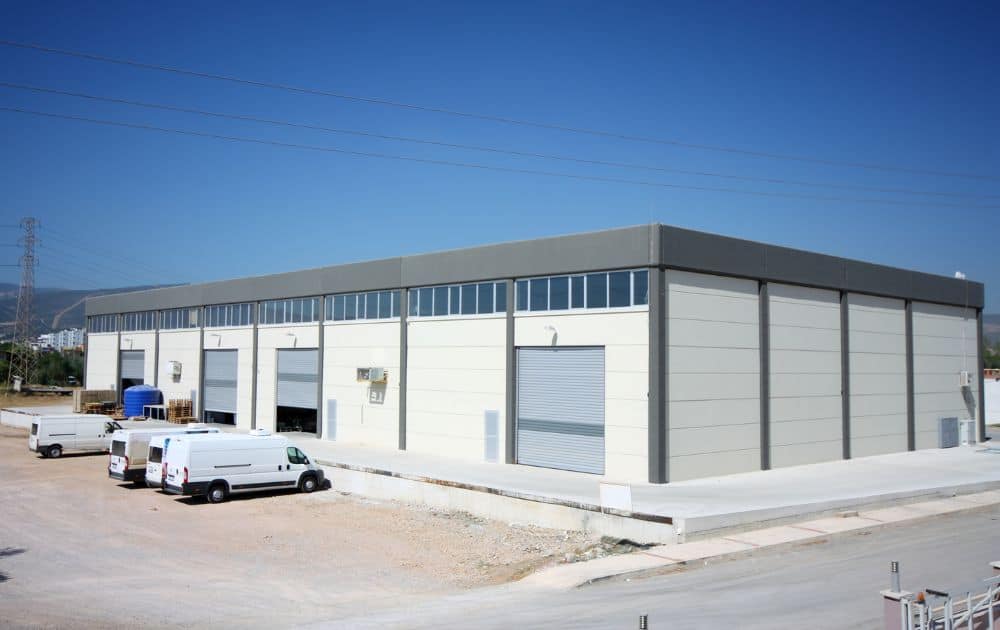The traditional approaches to warehouse management are being replaced by tech-driven solutions that offer increased efficiency and productivity. This article will explore the differences between traditional and tech-driven approaches and highlight the growing role of technology in warehouse management.

Traditional vs. Tech-Driven Approaches
In traditional warehouse management, manual processes and paper-based systems were the norm. Tasks such as inventory management, order fulfillment, and tracking were time-consuming and prone to human error. The lack of real-time visibility also made it challenging to respond quickly to changing demand.
On the other hand, tech-driven approaches leverage the power of technology to automate and streamline warehouse management processes. Warehouse management systems (WMS) are now widely used to provide real-time visibility into inventory levels, optimize order fulfillment, and track shipments.
The Growing Role of Technology
With the use of technology, warehouse operations have become more efficient. Automation and robotics have reduced manual labor, minimized errors, and improved overall productivity. Additionally, technology enables better inventory accuracy through real-time tracking and automated inventory control.
Furthermore, technology has streamlined various warehouse operations. Warehouse management systems (WMS) enable businesses to optimize overall warehouse processes. RFID technology allows for seamless tracking and identification of products, minimizing errors and improving inventory management.
Essentially, the evolution of warehouse management has witnessed a shift from traditional manual processes to tech-driven solutions. The growing role of technology has brought increased efficiency, and enhanced accuracy. Thanks to this, the future of warehouse management holds even more exciting possibilities.
Benefits of Technology in Warehouse Management
The integration of technology in warehouse management has revolutionized the way businesses handle their operations. From increased efficiency and productivity to enhanced inventory accuracy, technology has become an indispensable tool in optimizing warehouse processes.
Increased Efficiency and Productivity
One of the ways technology boosts efficiency is through the use of WMS. These systems provide real-time visibility into inventory levels, enabling warehouse staff to fulfill orders more efficiently. WMS also helps optimize picking and packing processes by providing optimal routes and organizing tasks based on priority.
Another technology-driven solution that enhances efficiency is the use of automation and robotics. Automated systems can handle repetitive tasks, such as sorting, picking, and packing, with precision and speed. This reduces the reliance on manual labor, allowing employees to focus on more value-added activities.
Enhanced Inventory Accuracy
Accurate inventory management is vital for the smooth functioning of a warehouse. With the implementation of technologies like RFID, warehouses can accurately track the movement of goods throughout the facility. RFID tags on products enable real-time updates on inventory levels, minimizing stock discrepancies.
Inventory management systems integrated with barcode scanning capabilities further enhance accuracy by ensuring proper identification and tracking of items. These systems provide real-time updates on stock levels, allowing businesses to make informed decisions regarding replenishment and order fulfillment.
Streamlined Operations
Technology streamlines warehouse operations by providing seamless connectivity and communication between different processes and departments. Warehouse staff can utilize mobile devices, such as tablets or scanners, to access real-time information on inventory, orders, and shipments.
This instant access to data enables efficient coordination and collaboration, reducing delays and improving overall operational efficiency. Furthermore, by utilizing data analytics and predictive analytics, warehouses can determine the most efficient routes, reducing transportation costs.
Data Analytics in Warehouse Management
Data analytics plays a crucial role in transforming warehouse management practices. By harnessing the power of data, businesses can gain valuable insights and make informed decisions to optimize their operations. In this section, we will explore two key areas where data analytics is revolutionizing warehouse management.
Real-Time Monitoring and Reporting
Real-time monitoring and reporting enable warehouse managers to have a comprehensive view of their operations at any given moment. By leveraging data analytics tools, they can track and analyze various metrics in real time, such as inventory levels, order status, and employee productivity.
Additionally, real-time reporting enables quick and accurate decision-making. By having access to up-to-date data, managers can promptly address any operational issues and allocate resources effectively. Real-time monitoring and reporting allow for agile decision-making, leading to improved customer satisfaction.
Predictive Analytics for Demand Forecasting
Accurate demand forecasting is crucial for efficient warehouse management. Predictive analytics leverages historical data, market trends, and other relevant factors to anticipate future demand patterns, allowing businesses to identify demand trends and other factors that impact inventory requirements.
By harnessing the power of data analytics, businesses can also gain a competitive edge in warehouse management. Embracing data-driven approaches empowers warehouse managers to streamline operations, enhance efficiency, and keep up with the ever-evolving demands of the market.
Challenges and Considerations
Implementing technology in warehouse management brings numerous benefits, but it also comes with its fair share of challenges and considerations. It's essential for businesses to be aware of these factors to ensure a successful integration of technology into their warehouse operations.
Implementation Costs and ROI
The expenses associated with acquiring and implementing new technologies can be significant, including the cost of hardware, software, and personnel training. It's crucial for businesses to carefully evaluate the return on investment (ROI) of implementing these technologies to ensure that the benefits outweigh the costs.
To make a well-informed decision, businesses should conduct a cost-benefit analysis. It may be helpful to consult with industry experts or seek advice from companies specializing in manufacturing IT solutions to better understand the potential costs and benefits associated with specific technologies.
Staff Training and Adaptation
Introducing new technologies into warehouse management requires proper training and adaptation by the staff. Employees need to familiarize themselves with the new systems, processes, and tools to effectively utilize them. This can require additional time and resources for training programs and ongoing support.
Training should include not only the technical aspects but also the operational and strategic benefits of the technology. By ensuring that employees are well-trained and confident in using the technology, businesses can maximize their potential and minimize the risk of errors or inefficiencies.
Cybersecurity and Data Protection
As technology becomes more integrated into warehouse management, the importance of cybersecurity and data protection cannot be overlooked. With the increased reliance on digital systems and the interconnectedness of devices, warehouses become potential targets for cyberattacks.
Businesses must prioritize cybersecurity measures to safeguard sensitive data and prevent potential disruptions in warehouse operations. This includes implementing robust security protocols, regularly updating software and systems, and educating employees about best practices in data protection.

Future Trends in Warehouse Technology
Several emerging trends are set to revolutionize the industry, enhancing efficiency, sustainability, and integration. Let's explore three key areas driving the future of warehouse technology: artificial intelligence and machine learning, Internet of Things (IoT) integration, and sustainability and green warehouse technologies.
Artificial Intelligence and Machine Learning
Artificial intelligence (AI) and machine learning (ML) are revolutionizing warehouse management by enabling intelligent automation and optimization. AI and ML-powered algorithms can analyze vast amounts of data to identify patterns, optimize workflows, and improve efficiency over time.
AI and ML can also automate repetitive tasks, such as inventory tracking and order fulfillment, reducing manual errors and improving overall efficiency. By leveraging AI and ML, warehouses can optimize inventory placement, streamline picking routes, and even predict demand patterns.
Internet of Things (IoT) Integration
The Internet of Things (IoT) is another game-changing trend in warehouse technology. IoT involves connecting physical devices and equipment to the internet, allowing them to collect and exchange data in real-time. In the context of warehouse management, IoT sensors and devices can provide valuable insights into various parameters.
By integrating IoT devices into the warehouse infrastructure and control over their operations. For example, RFID tags can be used to track inventory throughout the supply chain. IoT-enabled sensors can monitor temperature, humidity, and other environmental factors, ensuring optimal storage conditions for sensitive goods.
Sustainability and Green Warehouse Technologies
Green warehouse technologies are emerging as a significant trend. These technologies aim to minimize the environmental impact of warehouse operations while improving efficiency. From energy-efficient lighting and heating systems to sustainable packaging materials, warehouses are adopting environmentally friendly practices.
One notable technology in this realm is the use of renewable energy sources, such as solar power and wind energy, to power warehouse operations. Essentially, green warehouse technologies not only contribute to environmental sustainability but also help businesses reduce operational costs and meet regulatory requirements.
Unlock Your Warehouse's Potential: Contact LK Technology in Cincinnati Today
Implementing these technologies requires careful planning and expertise. LK Technology, a leading provider of expert IT services in Cincinnati, can help you navigate the ever-evolving world of warehouse management solutions.
Don't let outdated systems hold your warehouse back. Contact LK Technology today for a free consultation and discover how we can help you unlock the full potential of your warehouse with cutting-edge technology solutions!


